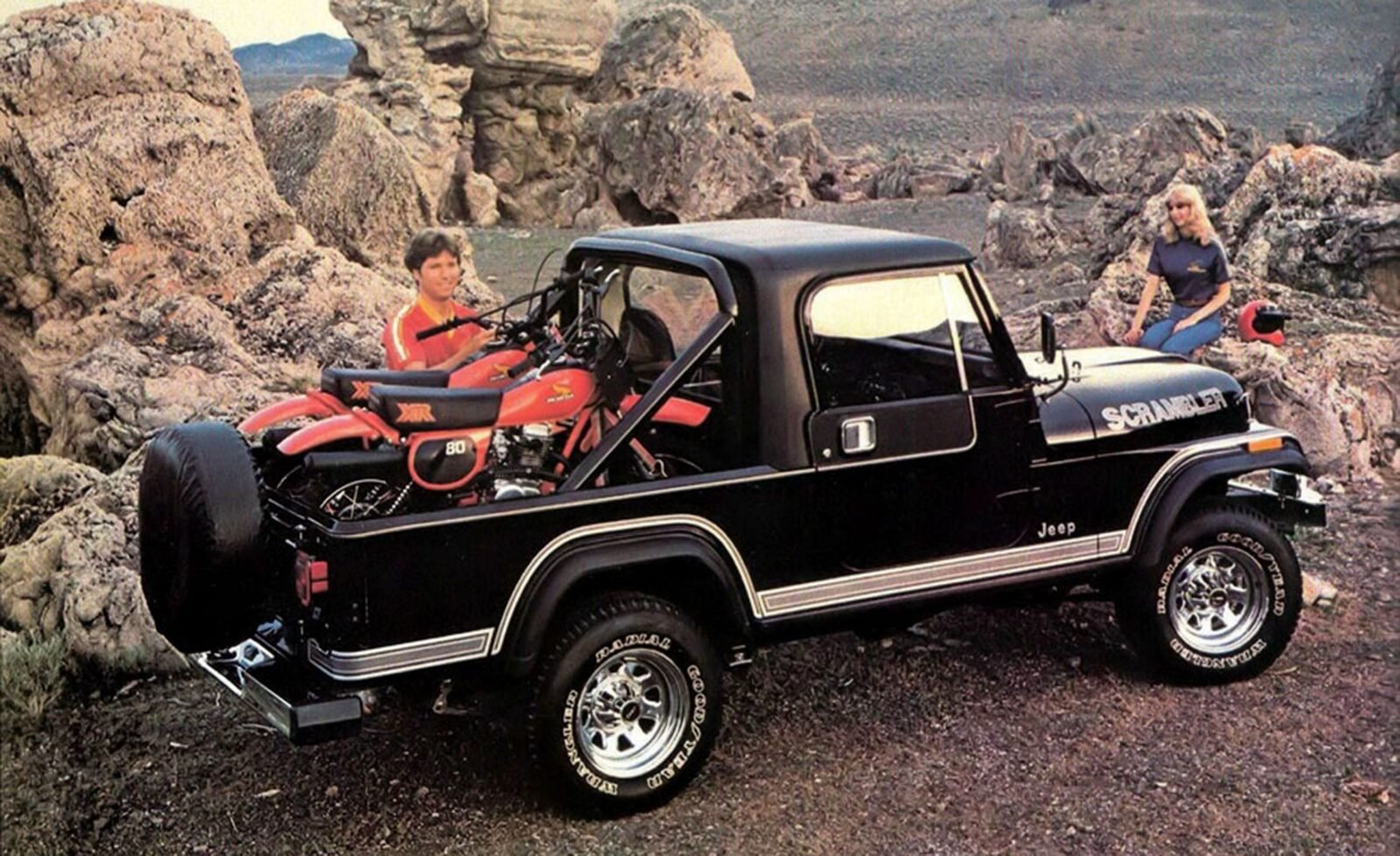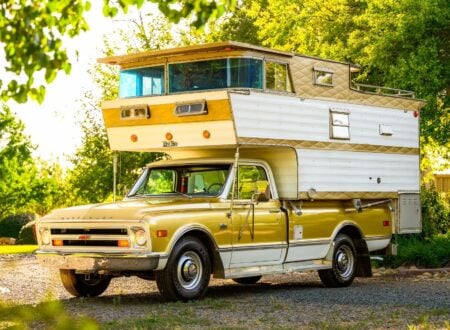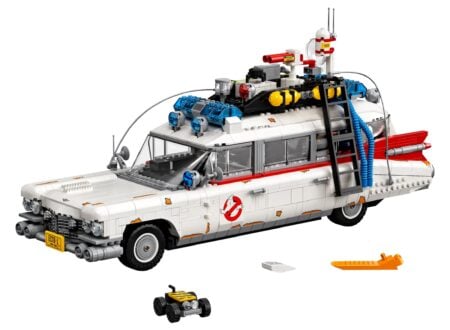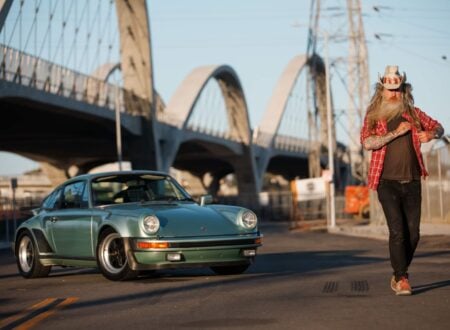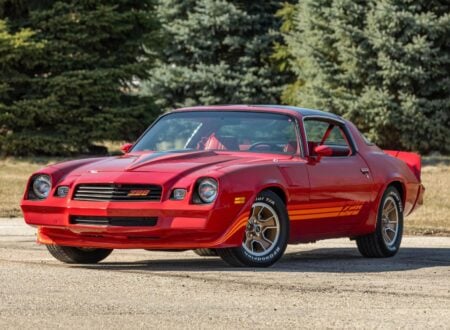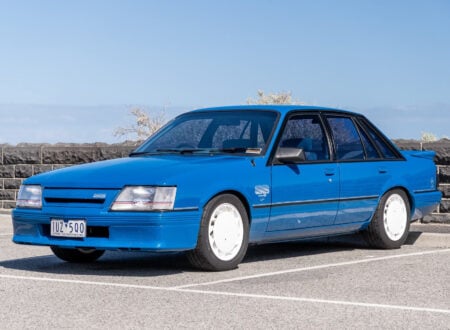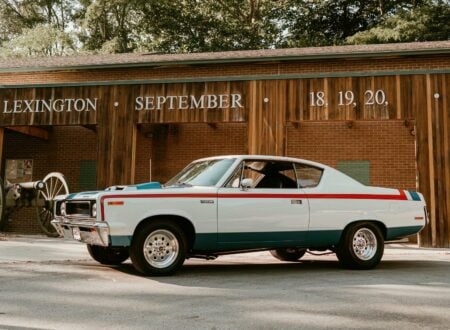First There Was the “Blitz Buggy” and a War to Win
The beginning of the Jeep CJ dates back to the origin of the “Jeep” itself, a story that began on 11th July 1940 when the US Department of War sent out an urgent request for a manufacturer to design and build a prototype quarter ton four wheel drive “scout car” within 49 days, and to produce an initial run of 70 vehicles within 75 days.
All this urgency had been caused by Time Magazine’s “Man of the Year” for 1938 who had gone on to start a war in Europe in 1939 when he sent his troops on a Blitzkrieg invasion of Poland.
Only American Bantam, which had originally been called American Austin and had in its past been a branch of Austin of England, stepped up to the plate and produced a design, a prototype, and an initial production run of their “Bantam Reconnaissance Vehicle (BRC), otherwise soon to be known as the “Blitz Buggy” because its planned use was to be in turning the Nazi Blitzkrieg tactic back against them, not on its own of course, but in concert with tanks, aircraft and all the materiel of mechanized warfare.

In the events that followed the American Bantam design would be given to Ford and Willys and they would go on to create their own General Purpose scout cars based on the American Bantam prototype, and by the war’s end it would be Willys-Overland who continued production of the diminutive general purpose scout car that had come to be called the “Jeep“.
The American Bantam design did not only father the Jeep, but it also went on to be the design inspiration for Britain’s Land Rover and also for the Japanese Toyota Land Cruiser.
A Jeep for the Civilian Market
The earliest beginning of civilian use for the Jeep was begun in 1942 by the US Department of Agriculture. They tested both Willys and Ford versions of the Jeep in typical farming applications at their facility in Alabama and found that they actually worked surprisingly well in the role of farm tractor as well as being a general purpose vehicle.
For tractor work they needed lower gearing and a draw-bar, and the clutch would need beefing up, but otherwise they had great potential.
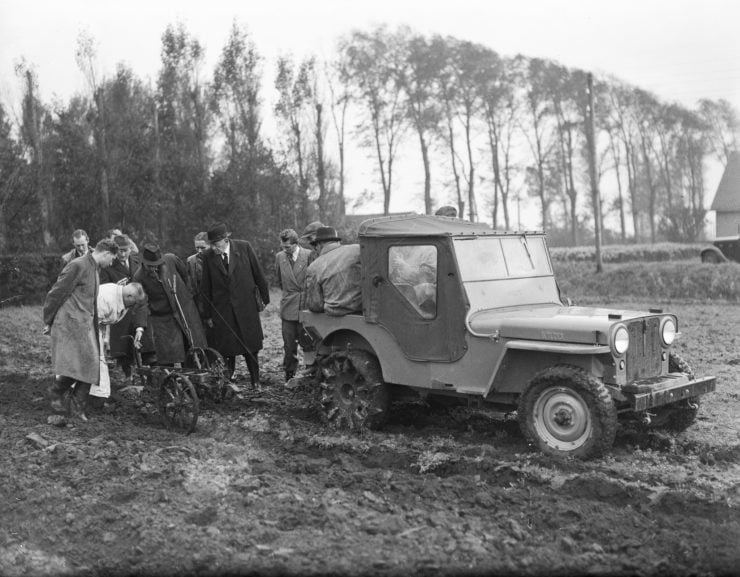
Aware of this, and also aware that the Jeep had become a much appreciated vehicle by servicemen, Willys-Overland could see the sales potential of a “Civilian Jeep” and by 1944 they began work on creating one.
Beginning with the existing military MB Jeep the guys of Willys design and engineering departments began creating prototypes which reportedly included such fittings as a canvas top, a draw-bar, and a tail-gate. This is generally known as the “CJ-1” although it never entered production and the number and exact design specifications remain unknown to the present day.
The Prototype Jeep CJ-2 and CJ-2A (1944-1949)
Work on the Jeep CJ-1 first generation prototypes developed into what became known as the CJ-2 second generation in 1944. Willys thinking appears to have been to create an agricultural civilian Jeep and it was in December 1944 that they were granted the trademark “AGRIJEEP”.
This name would appear on a dashboard plate of some of the Jeep CJ-2 prototypes. These CJ-2 prototypes were not available for retail sale but about 40-45 were constructed and trialed. The CJ-2 prototypes were fitted out with reference to the Department of Agriculture recommendations which included their being fitted with tail-gate, draw-bar and a range of mechanical and dimensional changes.
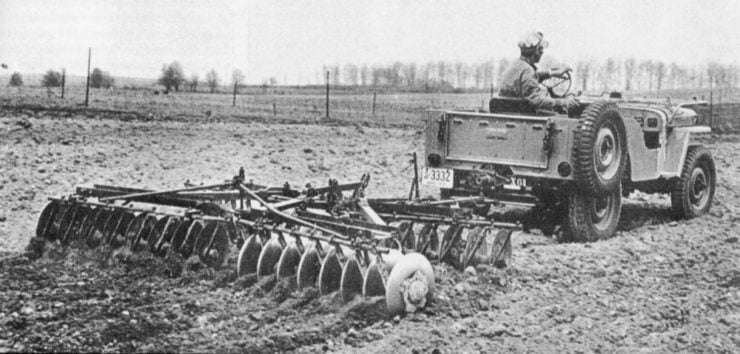
The bodywork changes made to the CJ-2 also included the rear wheel-wells being changed so the front seats could be enlarged and moved rearwards so that tall drivers could be comfortable, re-locating the spare wheel to the side of the vehicle, and both full and half canvas tops: the half canvas top leaving the load area at the rear exposed while the front two seats were under cover. The body also had driver’s side tool indentations.
Mechanical changes were varied but commonly included the axle gearing being lowered from the military 4.88:1 down to a more agricultural 5.38:1, and the Model 18 transfer case gearing also being changed from 1.97:1 down to 2.43:1. The gearbox was changed from the three speed T-84 to a stronger T-90 which used a column shift instead of the military floor shift. The clutch was also upgraded to an 8½” unit.
The 60hp “Go-Devil” engine was treated to a different carburetor and ignition system, and for power take-off use a King-Seeley engine governor was fitted. The power take-off was left facing.
One of the most visual differences on these CJ-2 Jeeps was the fitting of large cast brass “Jeep” badges on many of the early ones, located on the windscreen cowl, either side of the hood/bonnet, and on the rear. Willys began trying to trademark the “Jeep” name as early as 1943 and were up against opposition from Amercian Bantam, so they used the “Jeep” name prominently on the CJ-2 vehicles as a proof of usage.
As it turned out Willys did not actually manage to take ownership of the Jeep name until 1950, after American Bantam had gone out of business. Later CJ-2 had the cast brass badges replaced with “Jeep” stamped into the bodywork, such as into the windscreen cowl.
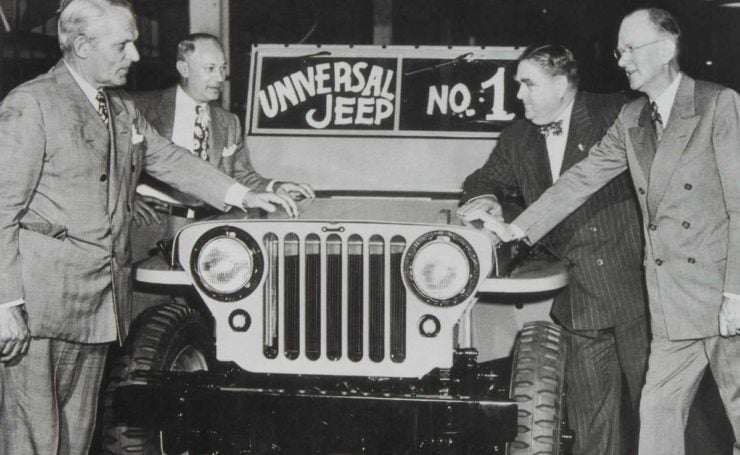
The follow on model from the CJ-2 was the CJ-2A which went into production on July 17th, 1945. This was the first full production civilian Jeep and it was designated as the Willys-Overland CJ-2A “Universal Jeep”.
Although the trademark “AGRIJEEP” had been granted in 1944 Willys decided not to use it but rather went with “Universal Jeep” so as not to limit its market. This was still very much a model that needed to test the waters to see just who would be lining up to buy these useful little vehicles.
The CJ-2A had a seven slot front grille and headlights mounted onto the front panel rather than recessed into it: for a practical civilian vehicle everything done to make things easy to remove and repair was going to be appreciated by hands-on practical customers. Otherwise the CJ-2A was equipped as per the specifications of the pilot series CJ-2 complete with L-184 “Go-Devil” engine and T-90 gearbox.
The CJ-2A base model was fitted only with a driver’s seat, a single vacuum operated windscreen wiper on the driver’s side, a hand operated single windscreen wiper on the passenger side, and a rear view mirror on the driver’s side. To equip the base model for the customer’s use a comprehensive list of optional equipment was available which included a front passenger seat, rear seat, center rear view mirror, either half or full canvas top, front and/or rear power take-off, belt pulley drive, capstan winch, King-Seeley engine governor, rear hydraulic lift, snow plow, generator, arc welder, mower, heavy duty springs, twin vacuum actuated windscreen wipers, heavy duty hot climate radiator, radiator brush guard, chaff screen, driveshaft guards, and dual tail-lights.
For agricultural use the CJ-2A was also offered with a 265lb weight mounted behind the front bumper to balance the vehicle for plowing. The prototype CJ-2 had been fitted with four optional weights adding up to about the same amount but mounted on the front bumper for this application.
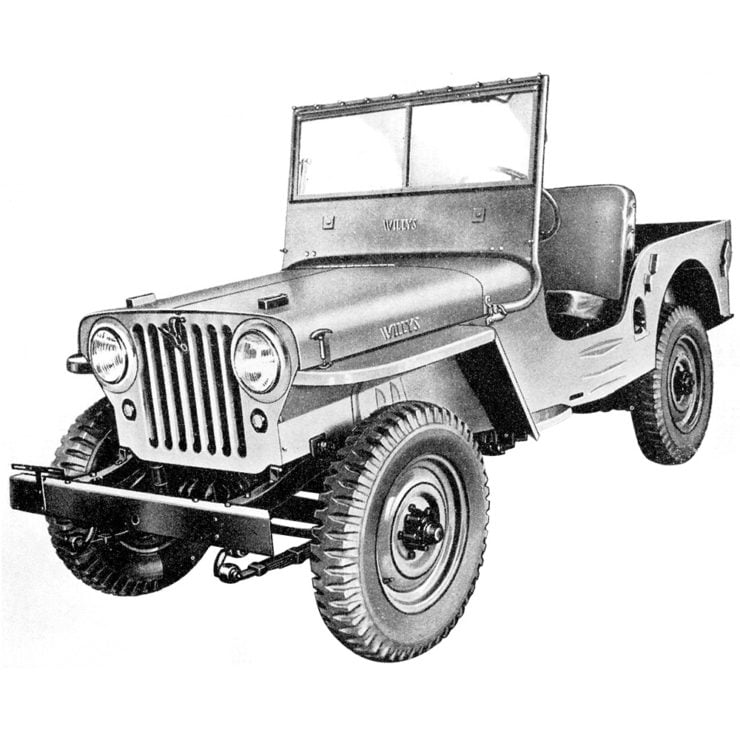
The CJ-2A models were painted in a variety of color schemes while the CJ-2 had been military olive drab. The earliest CJ-2A were built using left over parts for the Jeep MB, with this petering out around mid 1946 after which the Jeeps were made to a standard using parts made specifically for this model.
In total 214,760 Jeep CJ-2A were produced with production ending in 1949.
The Jeep CJ-3A and CJ-3B (1949-1968)
The CJ-3A was a slightly upgraded version of the CJ-2A. The engine, gearbox and transfer box remained the same with the vehicles having a Dana 25 front axle and a Dana 41 or 44 rear axle.
The windscreen was made as one piece with a vent at the bottom, and the wiper mechanisms were moved from the top of the windscreen to the bottom. The suspension was upgraded and the rear wheel-well was shortened which enabled moving the driver’s seat a couple of inches further to the rear for tall drivers. Also for tall drivers the roof height for the canvas top was raised and the waterproofing of the soft tops was improved.
The CJ-3A was in production up until 1953 and 131,843 were made.
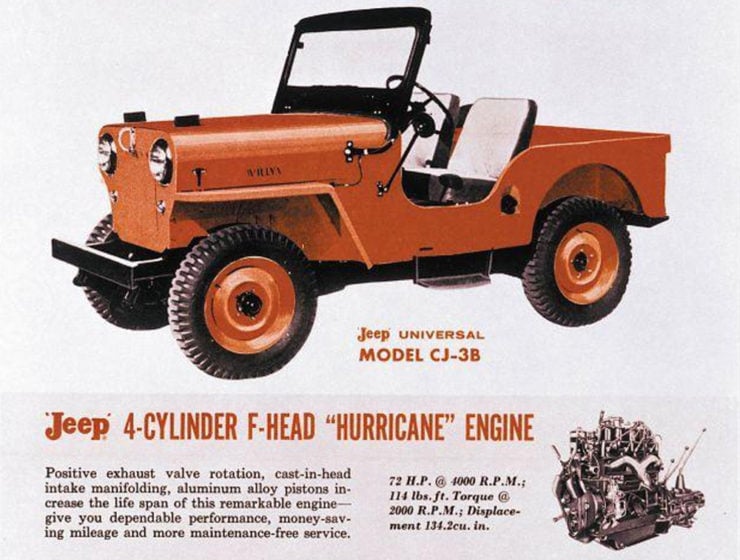
In 1953 Willys-Overland was bought by Kaiser Motors and they removed the “Overland” from the company name.
This was the year the Willys CJ-3B was introduced fitted with the more powerful F-head 134.2 cu. in. Hurricane engine, which produced 72hp @ 4,000rpm with 114lb/ft of torque @ 2,000rpm. This engine was of the same capacity as the “Go-Devil” but was physically taller and so required the hood/bonnet line to be raised up so it would fit, giving the CJ-3B a taller grille and hood and a distinctly different appearance.
The CJ-3B was made between 1953 and 1968 and 155,494 were made in the United States (a total of 196,000 if we include those made overseas in Turkey by Türk Willys, in India by Mahindra, and Spain by VIASA).
The Jeep CJ-5 and CJ-6 (1955-1983)
Despite the fact that it is usual for the debut of a new model to herald the end of production for the previous one this was not to be the case for the Jeep CJ-3B: it remained in production while the new CJ-5 and CJ-6 models made their way onto the showroom floor.
Willys, and their new owner Kaiser Motors were feeling their way with what the buying public would open their checkbooks for and so, as the old saying reminds us “If it ain’t broke don’t fix it”, they decided to keep the old and seemingly much loved older model going while they tested the waters with the new one. The sort of people who were buying the CJ-3B were not the sort of people who wanted change for change sake, in fact that was the sort of thinking they would not tolerate.
Although it would seem logical that the next production Jeep would be called the CJ-4 this was not to be the case. Just one prototype called the CJ-4 was made and it was a cross between a CJ-3 and the coming CJ-5. The vehicle was fitted with a Willys Hurricane engine and had a curved body style like that which would appear on the CJ-5.
The CJ-4 prototype was made sometime during 1950-1951 and was subsequently sold to an employee. What is interesting about that single CJ-4 prototype is that it shows Willys were looking to modernize the utilitarian Jeep with a view to making it more stylish. It would appear that they had realized that the Jeep was not just an agricultural/industrial utilitarian vehicle but that it had the potential to create a new sporting utility vehicle market.
Enzo Ferrari is reported to have said that “the Jeep was the only true American sports car” and we can see in Willys re-design the aim of turning this Second World War “Blitz Buggy” into a sports utility vehicle.
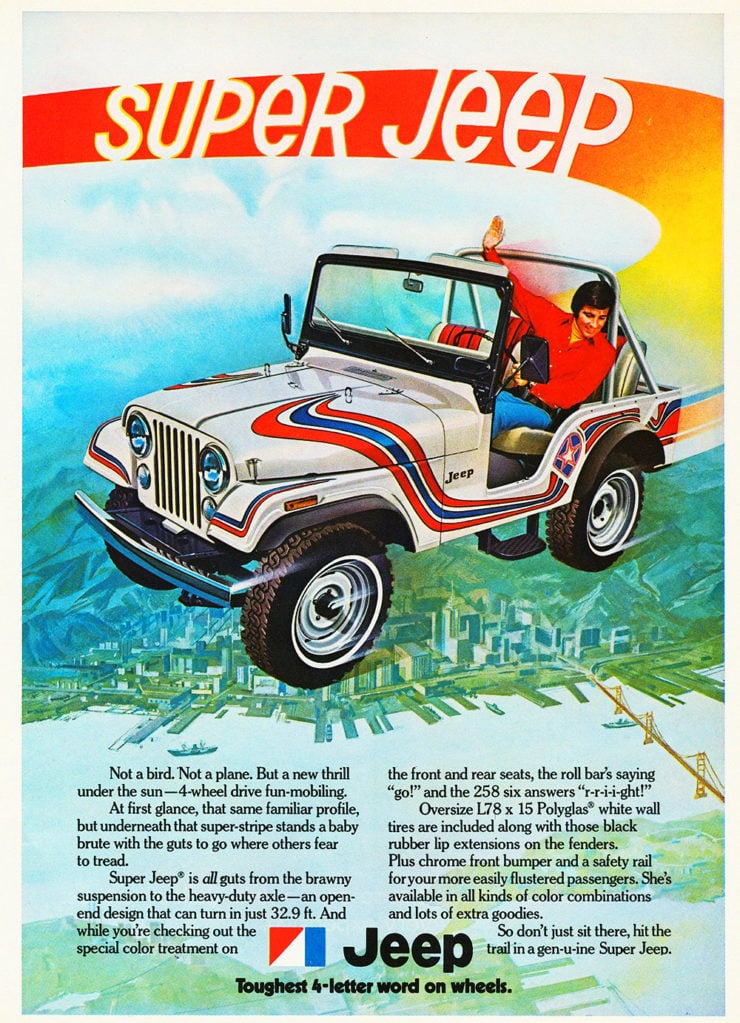
The CJ-5 was the short wheelbase of this new sports version, with dimensions remaining similar to the previous model Jeeps, but the CJ-6 was a long wheelbase, from 1955-1972 measuring 101″, and from 1972-1985 103½”, a change made necessary to fit new larger engines under the hood. both versions featured comfortable fitting bucket seats and more stylish rounded bodywork, which was also made of thicker gauge steel giving the vehicles a solid and “built like a tank” look and feel about them.
Kaiser Willys began to differentiate the engine choices in the CJ-5 and CJ-6 when in 1961 they began to offer the British four cylinder Perkins 192 cu. in. (3.15 liter) diesel which produced 62hp @ 3,000rpm and 143 lb/ft of torque at 1,350 rpm. We suspect that Willys could see that for the British Land Rover the diesel engine was a quite popular choice, and the four cylinder Perkins had earned for itself a good name, especially among commercial vehicle operators. So, rather than spending the significant sums of money required to design an engine of their own Willys bought engines with a known track record and support network for their CJ-5 and CJ-6.
It took a full ten years from the introduction of the CJ-5 and CJ-6 before Kaiser Willys were willing to take the gamble and begin to offer more sports oriented engines for their new sporty CJ-5 and CJ-6. 1965 was the year that Kaiser purchased the rights from Buick to manufacture their 225 cu. in. (3.7 liter) V6 “Dauntless” engine which churned out a whopping 155hp, about double the power of the four cylinder Hurricane engine. The gamble paid off and within three years three quarters of the CJ-5 and CJ-6 vehicles sold were equipped with that Dauntless engine: Jeep customers liked power!
During this time Willys began offering the Jeep with power steering, something that made maneuvering the weight of that V6 rather more easy.
1970 saw Kaiser Willys being purchased by American Motors Corporation (AMC) and the new owners decided they wanted to phase out the use of engines from other manufacturers and instead to fit their own. AMC had a different vision for the humble Jeep and that vision was for it to cease to be an agricultural and industrial workhorse, and instead for it to become a trendy sports vehicle.
AMC were keen for the Jeep to become something trendy like the Volkswagen Beetle but without the nasty Nazi skeleton in the closet: and for the surfing aficionados the Jeep would be a lot less likely to get bogged in the beach sand than a Volkswagen.
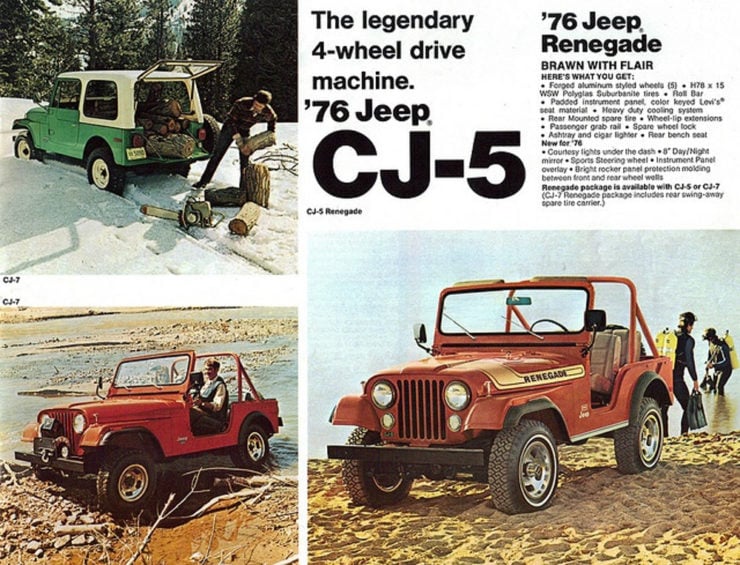
So it was that in 1971 GM Buick purchased their manufacturing rights back from AMC and, undaunted, used their freshly re-acquired “Dauntless” engine in some vehicles of their own. For 1972 the AMC “Torque Command” straight six cylinder 232 cu. in. (3.8) engine supplanted the aging “Hurricane” four, and for those in “California Dreamin'” the larger 258 cu. in. (4.2 liter) was the standard (optional elsewhere), both engines breathing through a single-barrel Carter YF carburetor.
Not only were the new big six cylinder engines installed as standard in the new sporty Jeep models AMC also offered their 304 cu. in. (5.0 liters) V8 for those with a “need for speed” and a wallet deep enough to keep the thirsty little gas guzzler from emptying its fuel tank. The V8 gave the once agricultural Jeep the power to weight ratio of a muscle car, albeit with a rather higher center of gravity, but no doubt there were those who took their Jeeps to the local drag strip to find out what they’d do.
Structurally the car was changed significantly for the fitting of the new engines. The open box-frame chassis was given six riveted cross members for additional rigidity. The wheelbase was increased from 81″ to 83.5″ while the fenders and hood grew by 5″. The firewall was moved 2″ rearwards and a new larger fuel tank was fitted at the rear between the frame rails, replacing the original one that had been under the drivers seat.
For the CJ-5 and CJ-6 the “Powr-Lok” limited slip differential was upgraded to the “Trac-Lok” in 1971 and, because a power take-off would not be needed on a sports vehicle, it was omitted from the list of options, no doubt to the annoyance of some potential customers. But on the plus side the more powerful Jeep was treated to a 25lb lighter but stronger Dana 30 fully floating open knuckle front axle which gave the vehicle a 6′ smaller turning circle.
1973 saw the new AMC “Quadra-Trac” full time four wheel drive system fitted, This system featured a center lockable differential and of course also continued to provide high and low range gears. In 1975 for the 1976 model year the CJ-5 and CJ-6 were upgraded again. The open box frame chassis was mostly boxed in and the cross members were welded and the side-rails were of heavier gauge steel. Changes to the dashboard included a single combined speedometer, temperature and fuel gauge with the option of a steering column mounted tachometer, or a factory fitted AM radio. For those in cold climates a “Cold Climate Package” was offered which provided an engine block heater for those who were living or traveling in areas where freezing of the engine oil and coolant were all too real probabilities.
1979 was the year the base model engine was changed to the 258 cu. in. (4.2 liter) in-line six cylinder breathing through a twin barrel Carter carburetor.
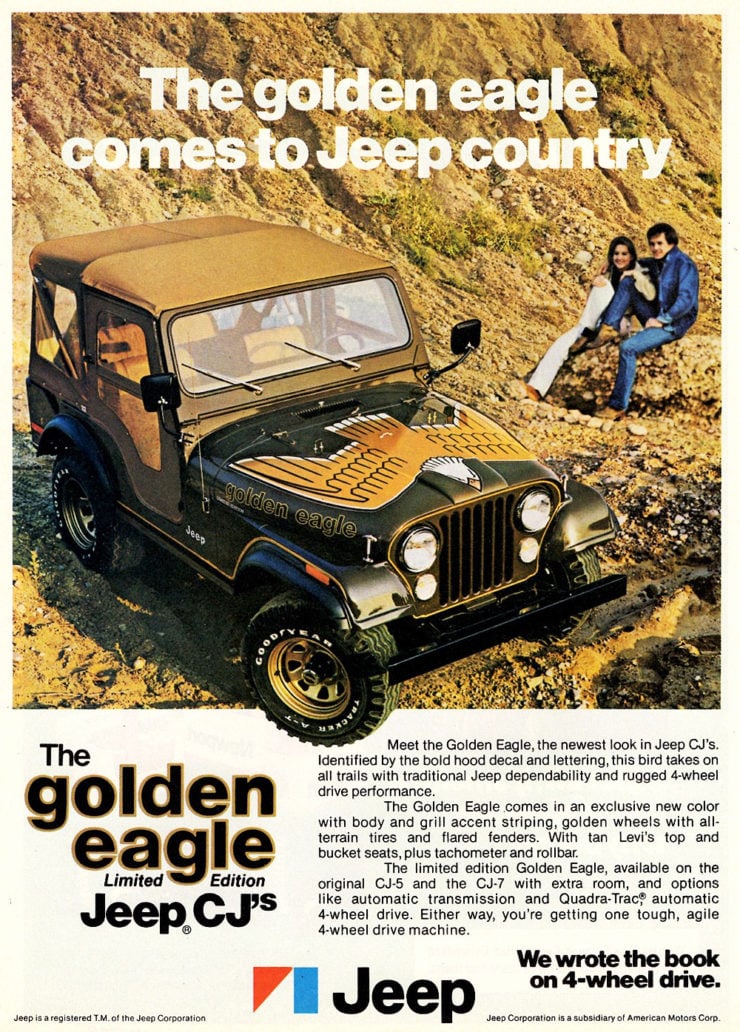
The CJ-5 and CJ-6 were made in a veritable plethora of special editions, essentially to promote the vehicle as something sporty and stylish, and in an effort to be constantly coming up with “and now for something completely different” to appeal to the checkbooks of an American public which AMC appears to have believed constantly needed new pretty temptations.
These various special editions included the four versions of the “Tuxedo Park” between 1961 and 1965, a “Camper” for 1969-1970 and a 462 performance package also for 1969, three versions of the “Renegade” from 1971 to 1983, the 1973 “Super Jeep”, 1977-1983 “Golden Eagle”, the 1979 “Silver Anniversary” one thousand units limited edition commemorating the CJ-5’s 25th Anniversary, the 1980 “Golden Hawk” and the 1980-1983 “Laredo”.
The Jeep CJ-7 (1976-1986)
The CJ-7 was to be the last of the line for the Jeeps that could trace their lineage from the World War II Jeep. The CJ-7 was ten inches longer than its CJ-5 sibling with a wheelbase of 93½” and underneath that longer and more curved bodywork was a new chassis design consisting of two parallel longitudinal rails stepped out at the rear to put the suspension as far out as possible for stability. The CJ-5 had received some negative publicity from those claiming it was prone to rollover, which it arguably wasn’t, certainly not more than any other vehicle that featured the necessary off-road ground clearance with the resulting higher center of gravity.
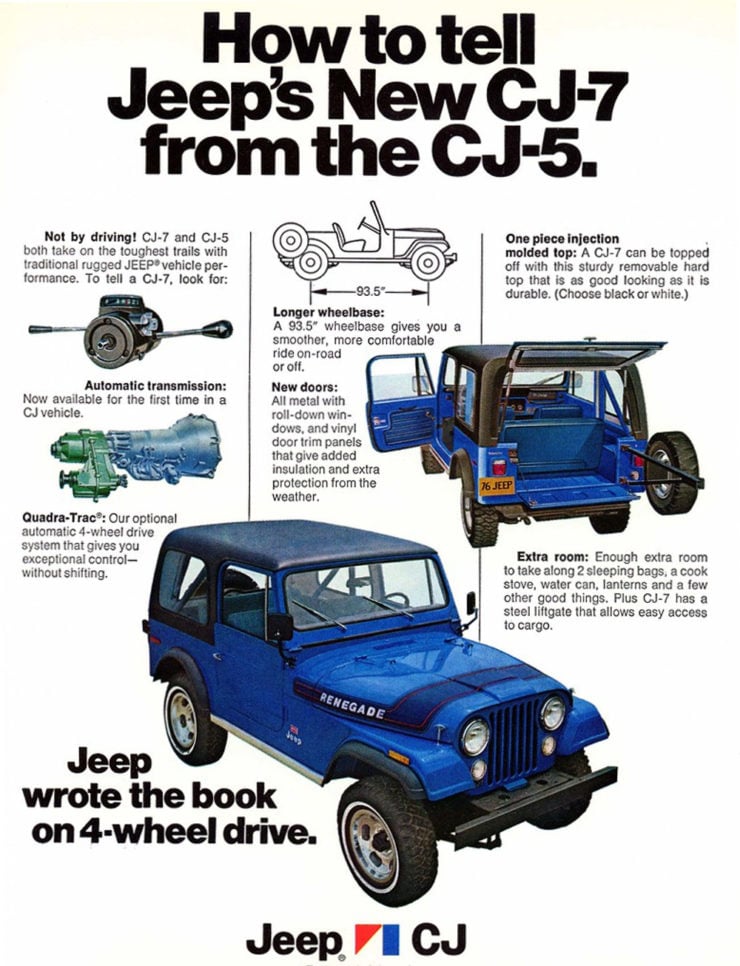
The CJ-7 was made for a modern generation of American consumers who were getting more and more used to manufacturers making life more easy for them. It was available with either manual or automatic gearbox, both mated to the Quadra-Trac all wheel drive system with high and low range so you could “climb every mountain” or highway cruise on Route 66 with equal aplomb: and if the going got muddy or the way was treacherous and icy then that full time four wheel drive helped keep the Jeep going where the driver was pointing it instead of demonstrating an ability to do a pirouette like a ballerina.
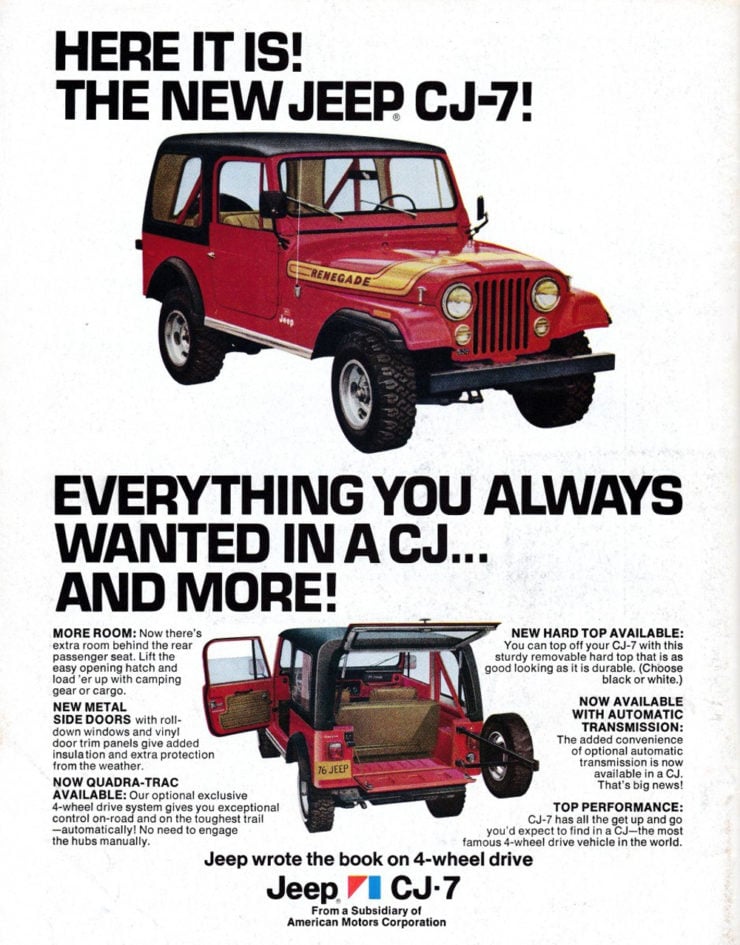
The CJ-7 was made in various special editions also including the Renegade, Golden Eagle, Golden Hawk, Laredo, and Limited. The last special edition was the Jamboree Commemorative Edition made for the 30th Anniversary of the Rubicon Trail.
The Jamboree Commemorative holds the title for being the most heavily optioned up Jeep ever made, at least up to that point. That last special edition was fitted with a dashboard plaque that read “Last of a Great Breed – This collectors-edition CJ ends an era that began with the legendary Jeep of World War II”.
The Jeep CJ-8 “Scrambler” (1981-1986)
The Jeep CJ-8, otherwise known as the Jeep Scrambler is perhaps most famous as President Ronald Reagan’s Jeep. This model was a long wheelbase version of the CJ-7 and so it also shared the distinction of being one of the last of the Jeeps that began with the World War II ones. In production from 1981 until 1986.
The CJ-8 Jeep Scrambler was arguably one of the most adaptable and practical of all the Jeeps ever made. The cab top was removable and the rear section was not a flat tray but rather a utility box, with the vehicle also coming with a roll bar just behind the driver and passenger seats.
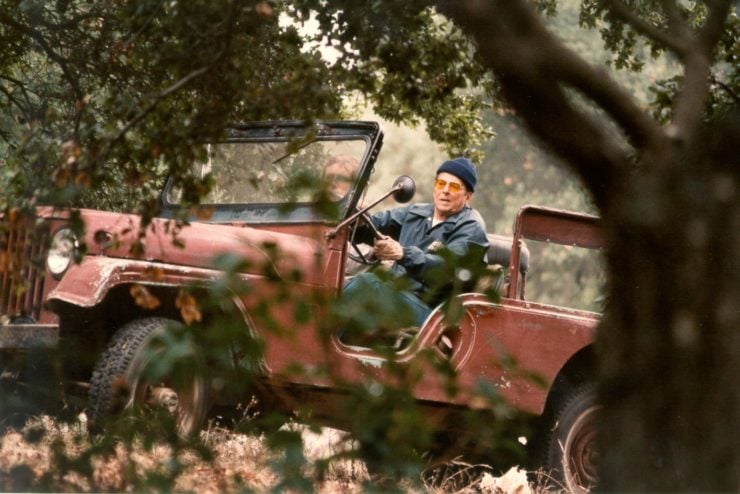
This very practical Jeep was fitted with an old fashioned part time four wheel drive system, complete with front free-wheeling/locking hubs. This would have been done to optimize the vehicle’s highway fuel consumption. The usual gearbox was either a four speed or five speed manual with the three speed automatic being an option.
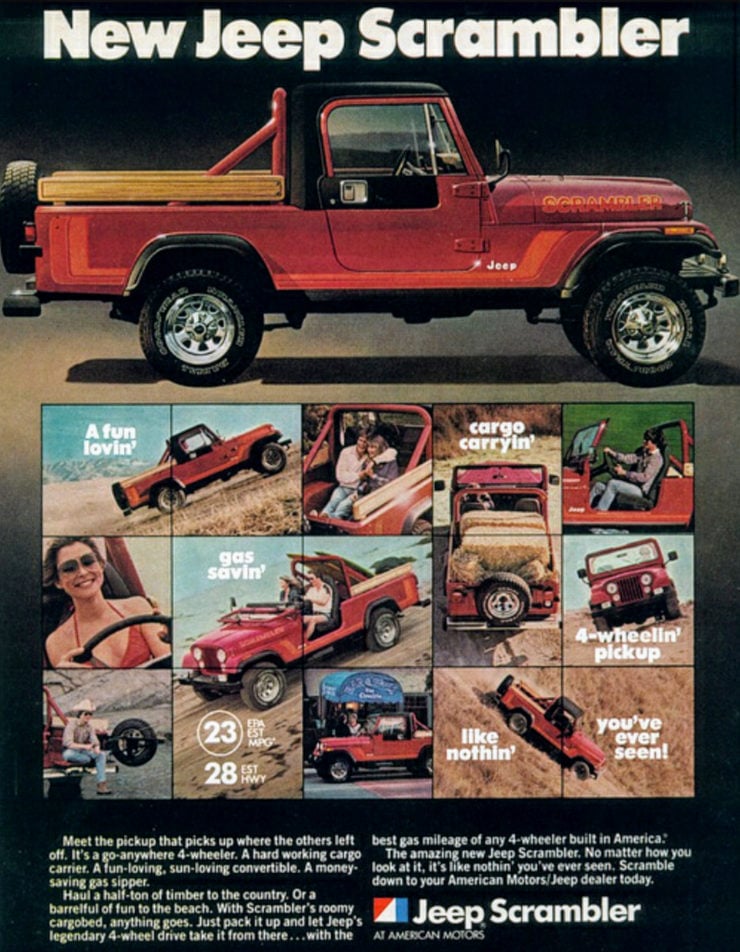
The End of a Story that is Not Yet Over
The CJ-8 was the end of the line for the Civilian Jeeps, the last of the breed that had begun in the dark days of 1940 when the US Department of War realized that the thing they had been hoping against hope to avoid was coming upon them like a freight train with no brakes.
It had been American Bantam who had stepped up to the plate and come up with the design for a vehicle that would not only help win the war, but that would go on to create a new concept for civilian vehicles, the four wheel drive. The American Bantam “Bantam Reconnaissance Car” would go on to be the father not only of the Willys Jeep in both military and civilian models, but also the British Land Rover, and the Japanese Toyota Land Cruiser.
The Civilian Jeep in all the “CJ” models was the American car that carried the flag and brought four wheel drive freedom and adventure to hundreds of thousands of people. It was a farm vehicle, mining vehicle, government vehicle, sports car, fishing and shooting wagon, and fashion icon, and it was even transport for a US President. It was and still is the car that best epitomizes “The Land of the Free”.
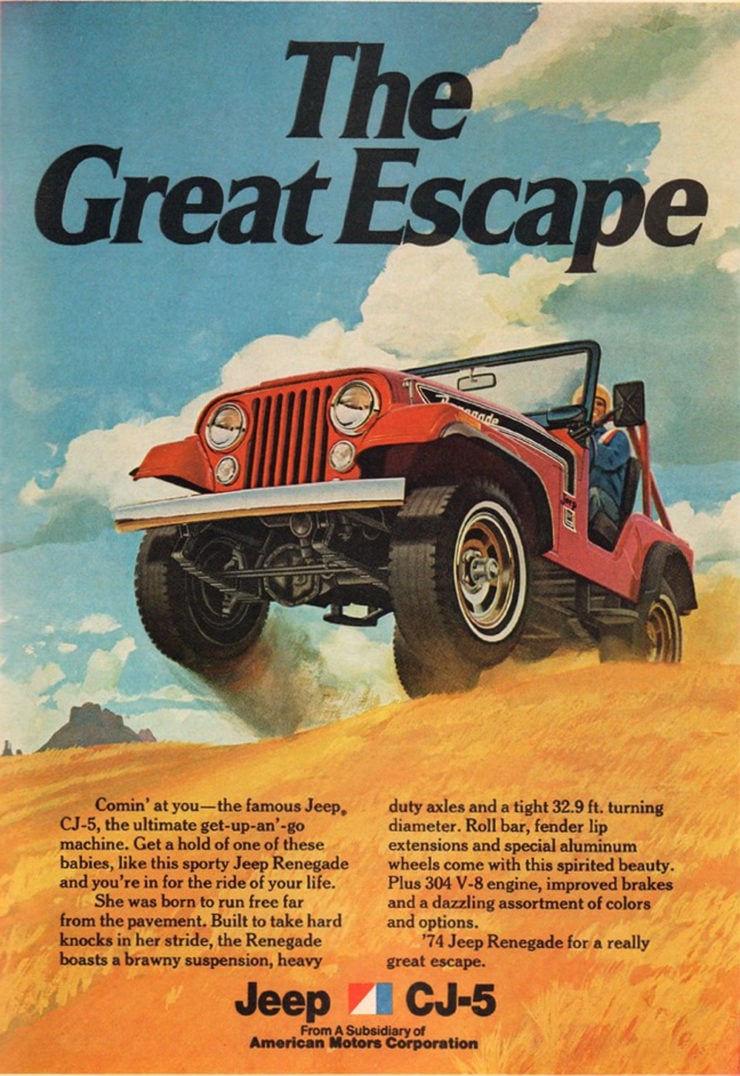
Picture Credits: Willys, Kaiser, AMC, Ronald Reagan Library, Netherlands National Archive.

Jon Branch has written countless official automobile Buying Guides for eBay Motors over the years, he’s also written for Hagerty, he’s a long time contributor to Silodrome and the official SSAA Magazine, and he’s the founder and senior editor of Revivaler.
Jon has done radio, television, magazine, and newspaper interviews on various issues, and has traveled extensively, having lived in Britain, Australia, China, and Hong Kong. The fastest thing he’s ever driven was a Bolwell Nagari, the slowest was a Caterpillar D9, and the most challenging was a 1950’s MAN semi-trailer with unexpected brake failure.

